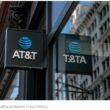802.11n technology makes muni-Wi-Fi possible
Could we see the resurgence of muni-Wi-Fi? Mesh vendors cringe when they hear that word and are loath to use it, as it brings back not-so-fond memories of the muni-Wi-Fi implosion — namely big names like Earthlink promising to blanket cities with Wi-Fi and offer ad-supported free broadband access, but failing to deliver on those promises.
Despite the public debacles surrounding muni-Wi-Fi — both EarthLink and MetroFi pulled the plug on their respective muni-Wi-Fi services in 2008 — the service remains viable in many cities and towns across the United States, and it may become more prevalent, serving both public safety and government.
Earlier this month, the IEEE officially ratified the 802.11n standard — a super-charged Wi-Fi technology that dramatically changes the capabilities and economies of the mesh networking business because it bumps Wi-Fi’s theoretical performance ten-fold and increases the range to three times that of the existing Wi-Fi standard.
That capability is particularly important to outdoor mesh networks, which have been successful in smaller zones but less so when deployed for longer range applications without a corresponding increase in the number of access points, which significantly increases costs, said Chip Yager, director of Motorola’s Mesh Network Product Group.
“A lot of applications are very bandwidth hungry and were enough to tap out a network in the previous generations of technology,” Yager said. “With 802.11n, there is a big leap in capacity.”
That means a city or municipality can enable public-safety users to access video surveillance while also enabling other functions such as meter reading to be wirelessly enabled.
Should muni-Wi-Fi make a comeback, it will be driven by local governments that embrace the service for their own needs, while also securing large anchor tenants such as school districts and hospitals. Eventually, local governments could offer access to their citizens and begin to blanket larger portions of the area.
This is exactly the opposite of the previous model, which primarily targeted enterprises and residents and let local governments essentially go along for the ride.
Municipalities currently providing muni-Wi-Fi services are leveraging spectrum in the unlicensed 5 GHz band and the quasi-licensed 3.65 GHz band, along with public safety’s 4.9 GHz band, Yager said. In many cases, they are using all three bands.
Entities operating in the 3.65 GHz band must apply for an FCC license and pay a nominal fee. Once the license is granted, that licensee must register each site. While the license is non-exclusive, should another entity have a similar license, it must demonstrate that its license doesn’t interfere with the first licensee.
Given the strengths of 802.11n, there is a “more compelling argument [for muni-Wi-Fi], and the fact we’re helping so many cities now days file for stimulus funding backs that up,” Yager said. Indeed, nearly 50% of the broadband stimulus applications were filed by local governments, said Craig Settles, head of the consulting firm Successful.com.
Of course, they don’t all propose to use Wi-Fi. WiMAX vendor Alvarion is trying to capitalize on the same concept. Alvarion earlier this month introduced a product for both the 3.65 GHz band and the license-exempt 5 GHz band.
And Firetide, which counts several public-safety entities as customers, introduced in April a new wireless infrastructure mesh, the Firetide HotPort 7000, which is capable of being deployed on a large-scale basis and of supporting some data-heavy and QoS-sensitive applications — such as video, voice and data applications — simultaneously.

















